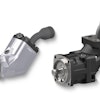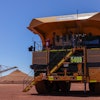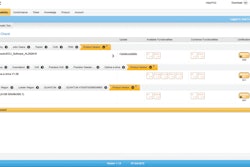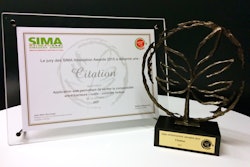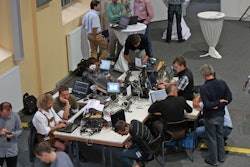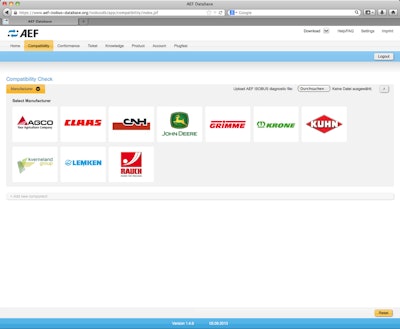
The Agricultural Industry Electronics Foundation (AEF) recently introduced its new ISOBUS certification label and database designed to provide farmers, equipment dealers and agricultural OEMs with a means of specifying which pieces of equipment are compliant with ISO 11783.
Based on the SAE J1939 protocol, ISO 11783—also known as ISOBUS—is an international standard which establishes a serial data network for control and communications systems used in forestry and agricultural equipment. Included in the standard are specifications for mobile data communication, network management, powertrain messages, electronic control units, and more.
AEF’s goal in developing the new certification label and database was to provide equipment users with more information about the ISOBUS systems now available in the market, which include even more functionalities than the systems first introduced in 2000. Because today’s systems are composed of a variety of components, and include more capabilities, the AEF certification process includes designation of ISOBUS functionalities—components or systems which can exist seperate from, as well as part of, the ISOBUS system. Functionalities supported by a piece of ISOBUS-certified equipment are designated on the certification label with a square containing an abbreviation for that functionality. For example, a label featuring a square containing the letters ‘UT’ indicates the inclusion of a Universal Terminal that will work with ISOBUS devices and can be used to control several devices with a single terminal if desired.
In addition to the Universal Terminal, other functionalities on the AEF ISOBUS label can include:
- Tractor ECU (TECU)
- Auxiliary Control Old (AUX-O) and Auxiliary Control New (AUX-N)
- Task Controller Basic (TC-BAS)
- Task Controller Geo-based (TC-GEO)
- Task Controller Section Control (TC-SC)
Visit AEF’s website for a full explanation of each of the ISOBUS functionalities included in the certification.
Three more ISOBUS functionalities are currently under development by AEF, and more will be added as necessary to meet the needs of continually advancing ISOBUS technologies. AEF is also developing an E-Label which will appear on a Universal Terminal display to provide users with an overview of the various functionalities supported by the vehicle’s ISOBUS system. The E-Label is intended to expand upon the information presented by the physical label on the machine by providing details such as the software versions of all devices supported by the ISOBUS system.
Currently there are three independent test labs a manufacturer can use to have its products AEF ISOBUS certified:
- ISOBUS Test Center (ITC) in Germany
- Reggio Emilia Innovazione (REI) in Italy
- Nebraska Tractor Test Laboratory (NTTL) in the U.S.
Once a piece of equipment is certified, its information is added to the newly created international database, which is free to access. On this site users can see what ISOBUS certifications a piece of equipment has, as well as which machines, implements, terminals and other components are compatible with one another due to their AEF ISOBUS conformance certification.
In addition, the database can be utilized to help solve any technical issues users may have with their equipment. Service technicians can connect to the equipment’s Universal Terminal to retrieve diagnostic information which is then be uploaded to the AEF Database. Uploading the information to the database enables service technicians to find out even more details about the equipment’s ISOBUS components, including potential compatibility issues which may be the cause of technical problems a user is having with the equipment. The service technician can choose to use the information contained in the database to solve the problem, or create a ‘ticket’ to notify a manufacturer that its involvement is needed in solving the problem.
All compatibility issues and solutions are kept track of in the database so that the next time a user comes across the same problem, he or she will be able to quickly fix it. The idea is to continually expand the amount of service information in the database so that if problems should occur, they can be solved in an efficient manner so farmers can get back to work as soon as possible.
Be sure to check out the article “Strength in similarity” in the upcoming digital edition of OEM Off-Highway’s October State of the Industry issue to learn more about AEF and other organizations like it who are working towards the development of more global standards and best practices for the heavy-duty equipment industry.


